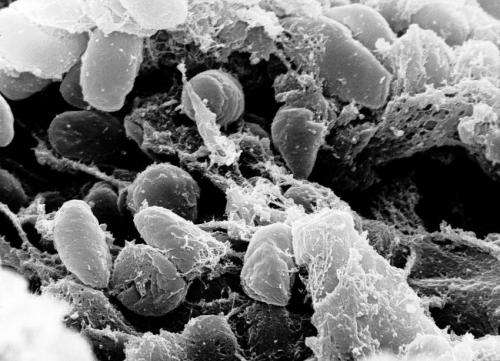New mechanism underlying pyroptosis induced by Yersinia infection

Multiple strategies have been employed by pathogenic bacteria to sabotage host innate immune signaling to facilitate their infection.
Previous studies revealed that the Yersinia effector protein YopJ targets and inhibits transforming growth factor-β–activated kinase 1 (TAK1) to block pro-inflammatory cytokine production. To counteract, host cells undergo pyroptosis via initiating receptor-interacting serine/threonine-protein kinase 1 (RIPK1)–dependent caspase-8–directed gasdermin D (GSDMD) cleavage. However, how RIPK1-caspase-8-GSDMD axis is instructed during Yersinia infection remains unknown.
In a study published online in Science, Prof. Liu Xing’s group at the Institut Pasteur of Shanghai of the Chinese Academy of Sciences, and Prof. Judy Lieberman’s group at Harvard Medical School, discovered via an unbiased CRISPR screen a critical and unexpected role of the lysosomal membrane-resident Rag-Ragulator complex in Yersinia infection-triggered pyroptosis.
The researchers found that loss of components of Rag-Ragulator complex resulted in the failure of pyroptotic cell death in response to Yersinia infection, suggesting an essential role of Rag-Ragulator complex in caspase-8–mediated pyroptosis.
Furthermore, they showed that upon infection with pathogenic Yersinia or its mimic (lipopolysaccharide plus TAK1 inhibitor), a FADD-RIPK1-caspase-8–containing complex was recruited via Rag-Ragulator complex to lysosomal membrane, and this process depended on Rag GTPase activity and Rag-Ragulator lysosomal binding but not Ragulator-activated mechanistic target of rapamycin complex 1 (mTORC1).
This study uncovered a critical role of Rag-Ragulator in TAK1 inhibition-induced pyroptosis during Yersinia infection. The new role of Rag-Ragulator in caspase-8-mediated pyroptosis confirms its key function as a central hub for monitoring environmental cues to decide not only whether a cell proliferates, but also whether it survives.
Source: Read Full Article
